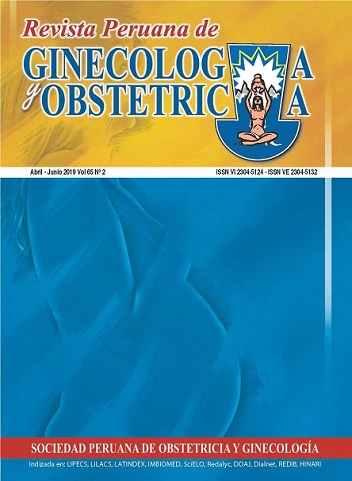Basal and postprandial intermediary metabolism of normal postmenopausal female high altitude dwellers
DOI:
https://doi.org/10.31403/rpgo.v65i2164Abstract
Objectives: To study basal and postprandial intermediary metabolism in normal postmenopausal high-altitude female dwellers, adapted to an environment characterized by low barometric and oxygen pressures and hypoxia. Methodology: An experimental study with control group was conducted; 20 normal high-altitude female dwellers –HAD- (Cusco, Peru, 3 395 meters above sea level-m.a.s.l.) and 16 normal sea level female dwellers –SLD- (Lima, Peru, 150 m.a.s.l.), 40 to 70 years old, postmenopausal, were included. Fasting glucose (G), total cholesterol (TC), HDL, triglycerides (Tg), insulin (I) and non-esterified fatty acids (NEFA) were measured in blood by conventional methods, and VLDL, LDL, non-HDL and HOMA were calculated. G, I, Tg, and NEFA were determined for 6 hours following the ingestion of a mixed meal containing 730 Kcal. Results: At fasting, the HAD had lower G and higher NEFA values than SLD; no differences in I, TC, HDL, non-HDL cholesterol were found. During the postprandial period, G was lower and Tg and NEFA were higher in the HAD; insulin concentrations were similar. Conclusions: Female HAD had a different intermediary metabolism than female SLD and high-altitude normal male dwellers, both at fasting and during the postprandial state.Downloads
Downloads
Published
2019-05-09
How to Cite
Garmendia, F., Pando, R., Mendoza, Y., & Torres, W. (2019). Basal and postprandial intermediary metabolism of normal postmenopausal female high altitude dwellers. The Peruvian Journal of Gynecology and Obstetrics, 65(2), 153–156. https://doi.org/10.31403/rpgo.v65i2164
Issue
Section
Artículos Originales

















